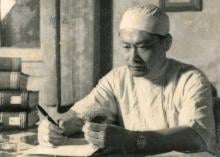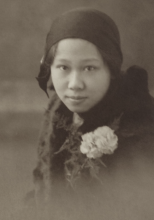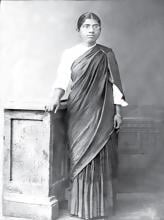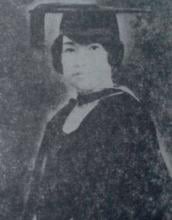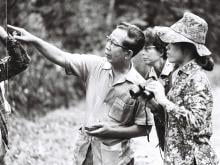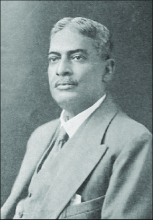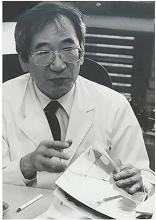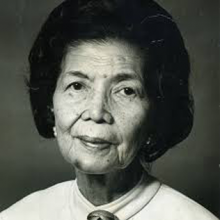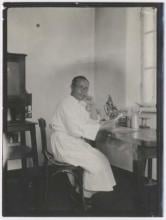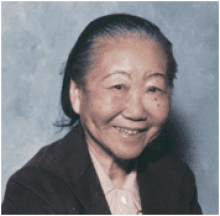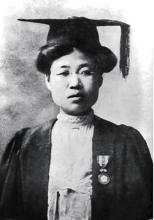Medicine
News

03 Oct 2008
Each moment that we are awake, our senses are bombarded with stimuli. Focusing our attention on the few stimuli that are important allows us to filter out the ones irrelevant to the task at hand. RIKEN researchers have found that attention does in fact modulate primary cortical responses to both auditory and visual stimuli.

03 Oct 2008
Japanese researchers provide the first large-scale identification of protein control sites from the model plant Arabidopsis

01 Oct 2008
Summaries of newsworthy papers include Biopsy sample sheds light on HIV-1 evolution, Magnetic imaging and sensing using diamond spins, The glaciation threshold, An earlier dawn for microRNAs, Measuring the magnetic field of a distant galaxy, Knock-out blow for Chlamydia and Evolution in action

01 Oct 2008
In Nature China this week - Cotton plants that have been genetically modified to produce insecticidal toxins could reduce pest populations in unmodified crops nearby

28 Sep 2008
Summaries of newsworthy papers include Thwarting tumour invasion, Glacier acceleration through subsurface ocean warming, Complement enhances tumour evasion, Groundwater levels determine land response to climate and A century of artificial nitrogen fertiliser

26 Sep 2008
RIKEN Center for Developmental Biology is an internationally recognized research institute working to elucidate the principles of animal development and regeneration, as well as develop innovative cell manipulation techniques. They are currently seeking 2 Team Leaders.

26 Sep 2008
The conference has been a forum for plant metabolomics researchers from all over the world to meet every one to two years since 2002. It was held in Asia for the first time this year.

26 Sep 2008
New experiments reveal detailed physical features of a protein thought to exacerbate the pathology of Alzheimer’s disease

24 Sep 2008
A new approach to improving vaccine supplies in the event of an influenza pandemic is reported

24 Sep 2008
In Nature China this week - Researchers in China have uncovered the signalling pathway responsible for damping down the antiviral effects of interferon-γ

24 Sep 2008
Summaries of newsworthy papers include Astronomy: Star light, star bright, Infectious disease: The GILTy party and Quantum Flicks: Now you see them, now you don't

21 Sep 2008
Summaries of newsworthy papers include ‘Friendly’ bacteria protect from diabetes, Downward dog, When humans control fire, Survival strategies, Cortisone shakes up channels, Watching protein structures move in nanoseconds and Fish fingers point to origin of digits and All of p53

17 Sep 2008
Summaries of newsworthy papers include Extremely warm year suppresses plants’ carbon dioxide uptake in the long term, Feature shared by two black hole counterparts, New approach for leukaemia treatment?, Colloids borrow a trick or two from DNA structure

17 Sep 2008
In Nature China this week - New policies are needed to ensure that coal power can be developed in China without high pollutant emissions and more

14 Sep 2008
Summaries of newsworthy papers appearing in Nature and Nature journals: Neuroscience: Deaf people learn new speech patterns, The tuberculosis bacterium’s stealthy ways, Susceptibility to bladder cancer, Dual gating in one motion,Risk factor for common kidney disease and A new take on tooth evolution
11 Sep 2008
Health experts of PolyU who have rendered their quality services to members of the China's national sports teams in preparation of the Beijing Olympics were thanked and praised.
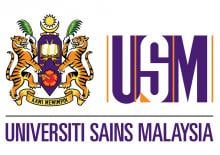
10 Sep 2008
The Association of Southeast Asian Institutions of Higher Learning (ASAIHL) welcomes nominations and applications to the 1st Annual ASAIHL-Scopus Young Scientist Awards in the fields of Life Sciences, Medicine, Engineering and Technology and Agricultural Science.

10 Sep 2008
Summaries of newsworthy papers include Astronomy: Extraordinary stellar blast visible to the naked eye, Climate change: The older the better, Astrophysics: A blast from the past of a celebrity star and Water flow through synthetic trees

10 Sep 2008
Twin studies from eight populations show that genetic mechanisms for height, weight and BMI are more variable than researchers previously suspected. Height, weight and body mass traits are more diverse in Caucasians than in East Asian adolescents.

10 Sep 2008
A three-year field study on the Tibetan plateau shows that plant species differ in their ability to emit or consume methane

07 Sep 2008
Summaries of newsworthy papers include Genetics: Enzyme associated with vitamin B12 levels and Immunology: Coping with immune cell death

04 Sep 2008
The research establishes the power of The Cancer Genome Atlas project and shows that it has the potential to expand rapidly our knowledge of the genetic alterations involved in cancers.

04 Sep 2008
China's national treatment program has significantly reduced the mortality rate of HIV-infected blood donors through the use of 'cocktail' drugs

31 Aug 2008
Summaries of newsworthy papers include Geoscience: Rapid ancient sea level rise, Neuroscience: Why the brain makes new nerve cells, Nature: Telomerase structure revealed and Nature: Genetics of geography

27 Aug 2008
Hearing: Encouraging hair growth, Dark secrets of Milky Way’s satellite galaxies, Viruses affect the carbon cycle, Reprogramming without pluripotency, Unravelling current coils in the Earth’s geodynamo, Altered states, Rethinking Hedgehog signalling, Quantum boost, BDNF and chromatin remodelling and Kids learn to share by age 7–8

27 Aug 2008
In Nature China this week - Biosensors: Infiltrate to enhance, Metabolic syndrome: Nonpeptide peps up therapy, Mouse pheromones: Secret seducers, Gene expression: Cluster spotting and Graphene: Thickness detector

24 Aug 2008
Summaries of newsworthy papers include Quantifying the Arctic carbon pool, Exploitative tricks of antibiotic-resistant bacteria, Domino drug action, Stem cells classified, Glaciers and river nutrients and A jolt to plume models?

21 Aug 2008
Universiti Putra Malaysia (UPM) faculty of Veterinary Medicine’s Veterinary Laboratory Services Unit (VLSU) is the first academic Faculty in Malaysia to be granted accreditation certification of the Malaysian Laboratory Accreditation Scheme (SAMM)

20 Aug 2008
Summaries of newsworthy papers include Imaging of filaments from a giant galaxy, Oxidation strikes gold, Bacteria sacrifice themselves for the greater good, Ice clouds in the martian atmosphere, A potentially dangerous molecule on the loose and What a tangled web

20 Aug 2008
In Nature China this week - Researchers in China have identified a genetic locus that is important for regulating hybrid sterility and more
Researchers
Sorry, no researchers coming up for this topic.
- « first
- ‹ previous
- 1
- 2
- 3
- 4
Giants in history
Vietnamese surgeon Tôn Thất Tùng (10 May 1912 – 7 May 1982) developed a pioneering technique that reduced the risks and mortality rate of liver operations.
Michiaki Takahashi (17 February 1928 – 16 December 2013) was a Japanese virologist who developed the first chickenpox vaccine.
Irene Ayako Uchida’s (8 April 1917 – 30 July 2013) strides to understand genetic diseases such as Down syndrome paved the way for early screening of chromosomal abnormalities in foetuses.
Baron Kitasato Shibasaburo (29 January 1856 – 13 June 1931) was a Japanese physician and bacteriologist whose work led to a new understanding of preventing and treating tetanus, diphtheria and anthrax.
Maggie Lim (5 January 1913 – November 1995) was a Singaporean physician who promoted family planning and expanded the access to clinics to improve the quality of life for mothers and children in Singapore’s early days.
By isolating soil microorganisms and studying the compounds they produce, Satoshi Omura (born 1935) discovered almost 500 organic compounds with unique properties that were produced by these microorganisms, including many new antibiotics.
The founder of the Adyar Cancer Institute in India, Muthulakshmi Reddy (30 July 1886 – 22 July 1968), fought to uplift women and girls from impoverished situations.
Chinese-American virologist and molecular biologist Flossie Wong-Staal (27 August 1946 – 8 July 2020) was the first scientist to clone HIV and determine the function of its genes.
Maharani Chakravorty (1937 – 2015) was one of India’s earliest molecular biologists whose research paved the way for advances in the treatment of bacterial and viral infections.
Archana Sharma (16 February 1932 - 14 January 2008) conducted research into plant and human genetics that expanded the understanding of both botany and human health. In relation to botany, she uncovered the means by which asexually-reproducing plants evolve into new species.
The first Thai woman to receive a degree in medicine, Margaret Lin Xavier (29 May 1898 – 6 December 1932), is best remembered for her compassion towards her less privileged patients.
In 1915, pathologist Katsusaburo Yamagiwa and his research assistant Koichi Ichikawa became the first to prove that chronic exposure to chemicals can cause cancer.
In 1915, Koichi Ichikawa along with pathologist Katsusaburo Yamagiwa became the first to prove that chronic exposure to chemicals can cause cancer.
Husband and wife team, Kimishige (3 December 1925 – 6 July 2018) and Teruko Ishizaka (28 September 1926 – 4 June 2019) discovered the antibody class Immunoglobulin E (IgE) that triggers allergic reactions. They also discovered that IgE antibodies attach to white blood cells, known as mast cells, releasing histamine, which causes allergic reactions.
Husband and wife team, Kimishige (3 December 1925 – 6 July 2018) and Teruko Ishizaka (28 September 1926 – 4 June 2019) discovered the antibody class Immunoglobulin E (IgE) that triggers allergic reactions. They also discovered that IgE antibodies attach to white blood cells, known as mast cells, releasing histamine, which causes allergic reactions.
Japanese chemist Takamine Jokichi (3 November 1854 – 22 July 1922) founded the Tokyo Artificial Fertilizer Company, where he isolated a starch-digesting enzyme (named takadiastase) from the fungus Aspergillus oryzae.
Ground-breaking cancer researcher Kamal Jayasing Ranadive (8 November 1917 – 11 April 2001) advanced the understanding of the causes of leukaemia, breast cancer and oesophageal cancer through the use of animal models. She was also among the first to recognise how susceptibility to cancer is linked to tumour-causing interactions between hormones and viruses.
The research of Filipino pharmaceutical chemist Luz Oliveros-Belardo (3 November 1906 – 12 December 1999) focussed on essential oils and other chemicals derived from native Philippine plants.
Thai physician and conservationist Boonsong Lekagul (1907 – 1992) made major contributions to the preservation of his country’s wildlife.
Indian scientist and physician Upendranath Brahmachari (19 December 1873–6 February 1946) is best known for creating a drug called Urea Stibamine, used to safely and reliably treat visceral leishmaniasis (or Kala-azar), a severe infection caused by the Leishmania parasite.
Filipino chemist and pharmacist Manuel A. Zamora (29 March 1870 – 9 July 1929) is best remembered for his discovery of the tiki-tiki formula to combat beriberi, a disease caused by Vitamin B1 deficiency.
Korean parasitologist Seung-Yull Cho (16 November 1943 – 27 January 2019) is remembered largely for his pioneering works to control infections caused by helminthic parasites and his contribution to journal publishing.
Fe Villanueva del Mundo (27 November 1911 – 6 August 2011) was a Filipina paediatrician who founded the Philippines’ first paediatric hospital.
After witnessing death and suffering as a youth in his home village during World War II, Nguyễn Tài Thu (6 April 1931 – 14 February 2021) set his sights on alleviating pain by becoming a doctor. After studying Traditional Chinese Medicine in China in the 1950s, Thu returned to Vietnam to serve in military hospitals. Eventually, he became the country’s foremost practitioner of acupuncture, a technique he first learned by inserting needles into himself.
Minoru Shirota (April 23, 1899 – March 10, 1982) was a Japanese microbiologist who invented the popular fermented drink Yakult.
Wu Lien-teh (10 March 1879 – 21 January 1960) was a Malaysian-born doctor who invented a mask that effectively suppressed disease transmission. Winning the prestigious Queen’s Scholarship enabled Wu to become the first Chinese student to study medicine at the University of Cambridge.
David T. Wong (born 1936) is a Hong Kong-born American neuroscientist who is best known for discovering the antidepressant drug fluoxetine, better known as Prozac.
Indian organic chemist Asima Chatterjee (1917 to 2006) studied the medicinal properties of plant products, especially compounds known as vinca alkaloids.
Chika Kuroda (24 March 1884 – 8 November 1968) was a Japanese chemist whose research focussed on the structures of natural pigments.
Umetaro Suzuki (7 April 1874 – 20 September 1943) was a Japanese scientist best remembered for his research on beriberi, a disease caused by vitamin B1 deficiency, characterized by limb stiffness, paralysis and pain.
Salimuzzaman Siddiqui (19 October 1897 – 14 April 1994) was an artist and chemist from Pakistan whose research focused on natural products from plants.
Barry Paw (29 August 1962 – 28 December 2017) was a biologist and oncologist who discovered several novel genes and their functions in red blood cells.
Syed Qasim Mehdi (13 February 1941 – 28 September 2016) was a Pakistani molecular biologist who was a founding member of the Human Genome Diversity Project (HGDP), which assessed human diversity by studying human migration, mutation rates, relationships between different populations, genes involved in height and selective pressure.
Tsai-Fan Yu (1911 – 2 March 2007) was a Chinese-American physician and researcher who was the first female full professor at Mount Sinai School of Medicine. She discovered that gout, a condition characterized by the painful inflammation of joints, was caused by elevated levels of uric acid in the bloodstream.
Min Chueh Chang (10 October 1908 – 5 June 1991) was a Chinese-American biologist who studied fertilization in mammalian reproduction.
A Japanese surgeon, Tetsuzo Akutsu (20 August 1922 – 9 August 2007) built the first artificial heart capable of keeping an animal alive.
Ogino Ginko (3 March 1851 – 23 June 1913) was the first registered female doctor to practise modern medicine in Japan.
Esther Park (1877-1910), born Kim Jeom-dong, was the first female Korean physician to practise modern medicine in Korea and trained the first generation of Korean female doctors.


